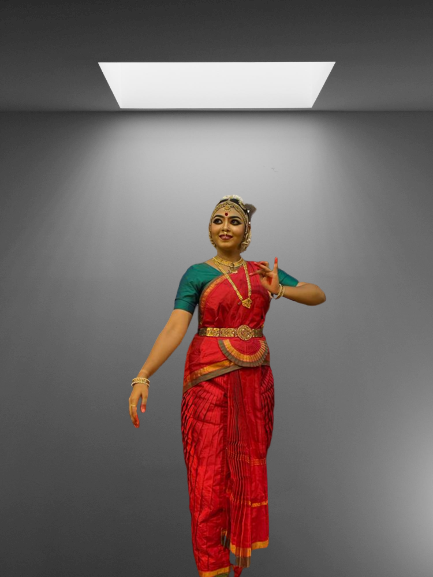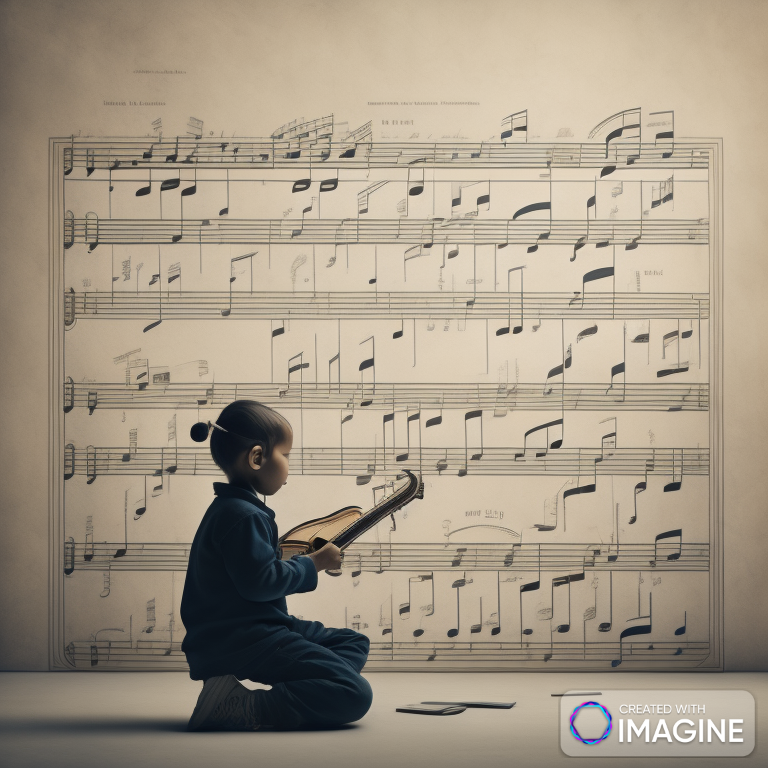
How to practice Bharatanatyam?
July 25, 2023
 Chaitanya S
Chaitanya S
Tring Tring!!!
The alarm rings and the routine begins,
I mean what can be the most suitable time to practice other than mornings
In my perspective “Practice” involves three major factors i.e,
- Time
- Patience
- Dedication
One should be very honest with their practice sessions. Let me discuss in brief how to practice Bharatanatyam from my perspective:
Whether the dancer is a beginning, moderate, or advanced-level learner, the most crucial aspect for everyone is exercise. Yes, the exercise will differ for intermediate/advanced level learners.
Tips for Beginner level
To begin practicing, find a location that is nice and calm, and ensure that no one will interrupt you during the session. Spending 30-40 minutes practicing is sufficient for beginners. The practice session should begin with an exercise like
- Hand stretches
- Raising the heels and bringing them back
- Sama Pada (standing straight) to Araimandi (half-sitting position-.) and from Araimandi to Muzhumandi (full sit & heels up) exercise which helps to improve the posture
- Sitting in Araimandi for at least 100 counts
- Muzhumandi (sitting position) jumps for at least 30 counts which improves to gain stamina.
- After the exercises, one should start practicing all eight Tatta Adavus which helps to improve the Araimandi and also stamina.
- All Adavus should be learned to improve flexibility, stamina, and body balance, which will also aid you in the future when learning items. Note: all the Adavus should be practiced in three speeds- Vilambit Laya (slow), Madhya Laya (medium), and Dhrut Laya (fast).
Try to practice the shlokas as taught by teachers- Asamyukta, Samyukta Hastas, head movements, eye movements, etc. Practicing all the mentioned exercises will help memorize and understand the art form.
I'd like to say a few words regarding the pain that you experience while practicing. So, when you do Araimandi, your knees will hurt. Bharatanatyam, like many other types of dances, can first induce physical discomfort or pain. It's vital to understand that this is a natural part of the learning process as your body adjusts to the specific demands of this classical dance form.
The feet, legs, and lower back are some of the most common areas of difficulty for beginners. Adavus, or intricate footwork, requires standing on the soles of the feet for extended periods, which can cause stiffness. Similarly, the bent-knee stance, or Araimandi, can cause pain in the legs and lower back at first until your body develops the required strength and flexibility.
As a beginner, patience, and perseverance are your best friends. Bharatanatyam's beauty eventually emerges. It's critical to enjoy the journey and learn about the cultural and spiritual aspects of this classical dance form. Remember that every skilled dancer began as a beginner!
Tips for Intermediate level
In my perspective, Intermediate learners are those who have pursued the art form for more than three years. Again, I want to mention here, exercises play a key role to improve your dance form.
When a learner is working towards the intermediate level, they skip the exercises from the beginner's level and move right on to practicing the content. As a result, there is imbalanced posture, injury, and a lack of stamina. So, instead of anything else, I want to emphasize the importance of practicing fundamental exercises.
- One should practice the fundamental exercise described at the beginner level to begin practicing. To achieve this, intermediate learners should concentrate more on their flexibility, stamina, balance, and concentration. The ideal technique is to incorporate Adavus's practice into warm-up sessions.
- For instance, I used to practice Tatta Adavus during my practice sessions to enhance my Araimandi. Mandi Adavu and Kudditu Mittu Adavus which aids in increasing stamina and strengthening leg muscles etc.
- Additionally, I also practice Allaripu in my practice session. likewise, you can use this strategy during your practice session.
- The focus should now shift to combining these steps in Jatis or sequences.
- At this level, students should also focus on Abhinaya (facial expressions). My guru always used to say “Stand in front of the mirror and start giving expressions. Do it till you feel that I have improved my expressions”. The same thing I want to pass on to you. This exercise helped me a lot in giving the proper expressions according to the scene.
- Along with facial expressions, body movement is also an important area to improve at this level.
- To practice Abhinaya, one of the best topics is Navarasas. To incorporate and practice Navarasas, choose your favorite Rasa and attempt to depict a scene from your daily life. Try this with all the Rasas and observe the results. This will boost your confidence and cause your brain to attempt to incorporate all the Rasas into every aspect of your daily routine. I believe this is the turning point in your enjoyment and creativity, which will aid you in your advanced studies.
Intermediate Bharatanatyam students may experience discomfort or pain as the complexity and duration of dance sequences increase. Pain might be caused by more complex motions, longer practice sessions, or finishing advanced sequences that need more energy and flexibility.
However, it is crucial to distinguish between 'good pain' that indicates muscular development, and 'bad pain' that may indicate potential injury. If you are experiencing severe pain, intense discomfort, or pain that does not go away with rest and proper care, you should consult a doctor to rule out any medical conditions.
To control and avoid pain, it is necessary to execute repeated warm-up and cool-down techniques before and after practice sessions. Exercises for strength, flexibility, and endurance can help prepare the body for the physical demands of Bharatanatyam. In addition, utilizing good technique and maintaining proper posture can help to prevent excessive stress on the body. With patience, consistency, and mindful practice, the initial discomfort will fade, and your body will become more adapted to the movements and postures of Bharatanatyam.
While Bharatanatyam is a physically challenging art form, it is equally crucial to remember the joy, satisfaction, and sense of accomplishment that comes with mastering this lovely dance.
Keep in mind that as you advance to the intermediate level, you are entering a more challenging area of Bharatanatyam. Although the obstacles may appear overwhelming, your enthusiasm and commitment will help you overcome them. Keep learning, keep dancing, and keep the Bharatanatyam journey fun! This art form's ultimate beauty is found in constant study and research.
In conclusion, I would like to say that Bharatanatyam is a beautiful and profoundly spiritual art form that requires perseverance, dedication, and a genuine love of dance. Every step, every movement, and every expression is a part of your own dance experience, whether you're a beginner learning your first Adavu or an intermediate student digging deeper into the rich tapestry of Bharatanatyam. Accept every learning opportunity, and allow the Bharatanatyam rhythm to guide you on your journey to creative expression and self-discovery. Continue to dance!





Kaushik
July 25, 2023
Wonderfully written ! It’s inspiring and the content of this blog will be extremely relevant for students learning Bharatnatyam as well as other art forms !
Aparna
July 25, 2023
Really great ❤️